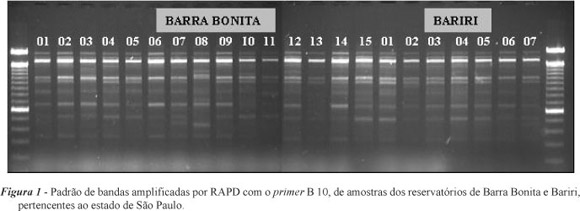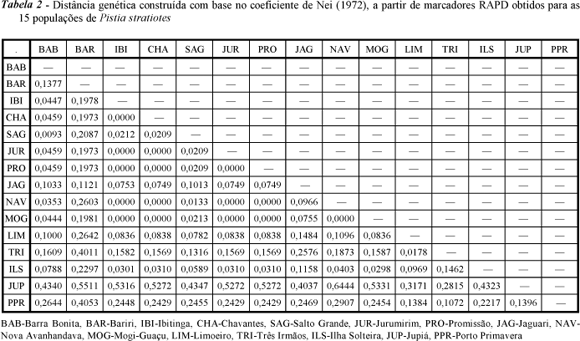Weed management in freshwater ecosystems requires accurate and specific care to avoid alteration and contamination in water bodies and to optimize the cost-benefit of management procedures. The study of population genetics of aquatic weed supplies data for its control and management. The waterlettuce is a floating aquatic weed widely distributed throughout Brazil; however, in eutrophic freshwater ecosystems, this and other fast-developing species cause social and economic problems due to their large production of vegetable mass. This study characterized the genetic variability of waterlettuce populations collected in 15 hydroelectric reservoirs (Barra Bonita-BAB, Bariri-BAR, Ibitinga-IBI, Chavantes-CHA, Salto Grande-SAG, Jurumirim-JUR, Promissão-PRO Jaguari-JAG, Nova Avanhandava-NAV, Mogí-Guaçú-MOG, Limoeiro-LIM, Três Irmãos-TRI, Ilha Solteira-ILS, Jupiá-JUP, and Porto Primavera-PPR) in the state of São Paulo, Brazil. The analyses were carried out in NUPAM (Nucleus of Advanced Research in Weed Science) FCA/UNESP, Campus of Botucatu-SP. RAPD markers was the technique applied to study genetic diversity. Most of the accesses sampled were very similar. The populations NAV, MOG, IBI, JUR, PRO, and CHA were genetically identical. BAB and SAG, and LIM and TRI were also similar presenting genetic distance of 0.0093 and 0.0178, respectively. The majority of the reservoirs (93%) presented genetic distance lower than 0.30, forming a specific group. However, Jupiá population, on average, presented the highest genetic diversity (0.45).
waterlettuce; DNA; RAPD; weed; aquatic plant




